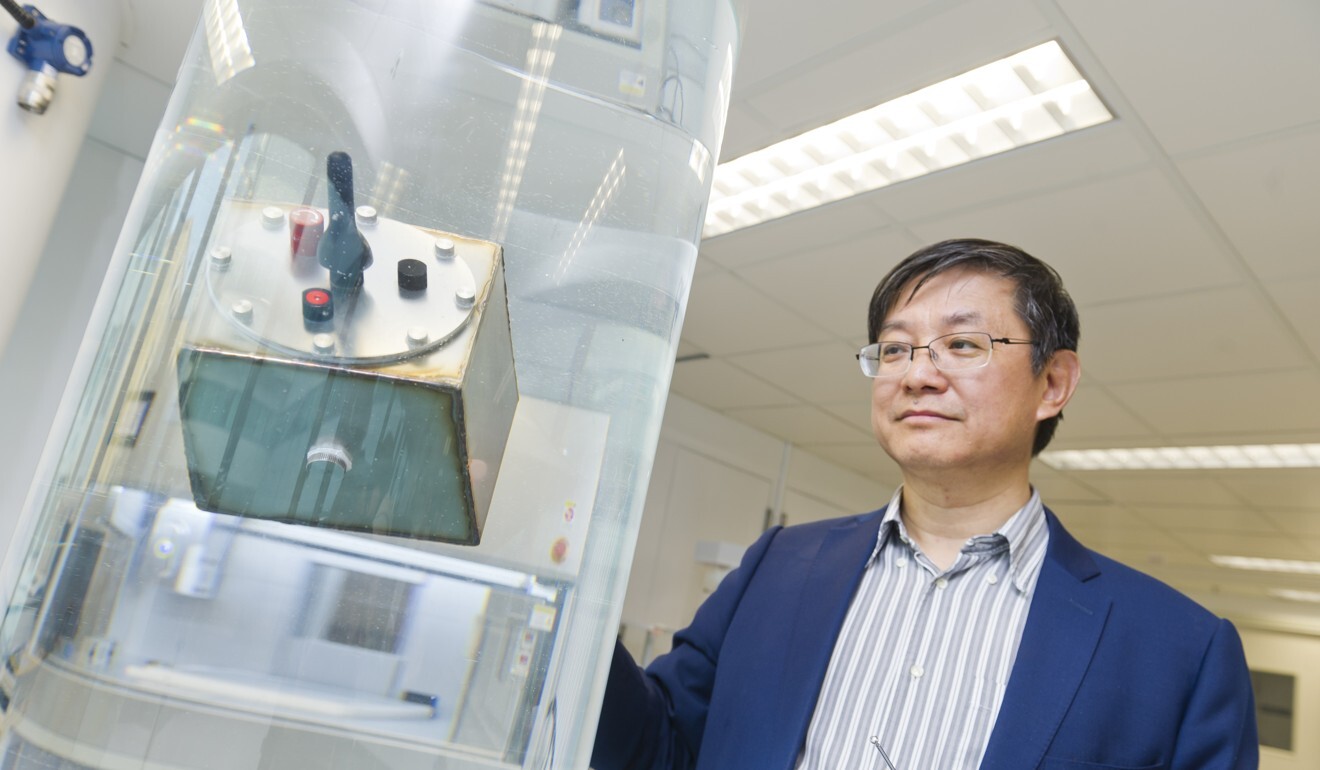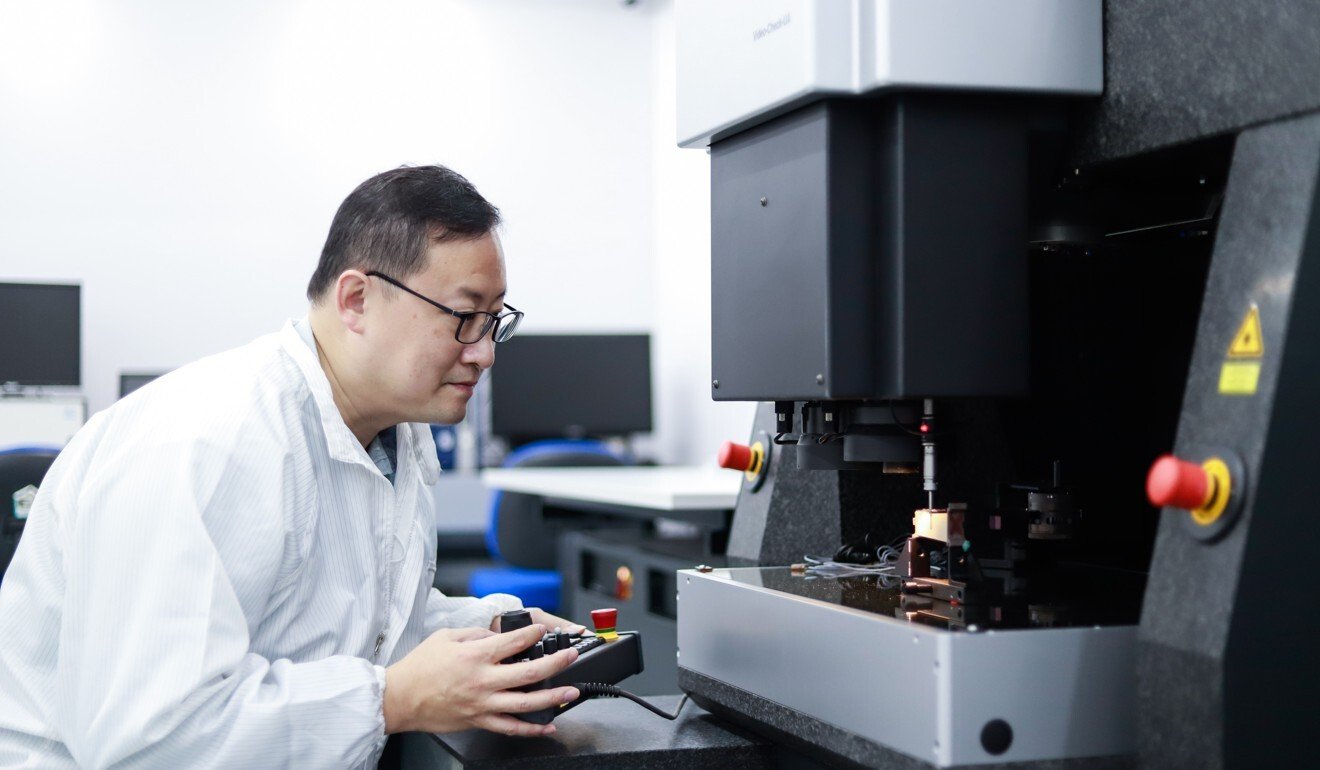
Analysis | China’s plan to boost innovation and what it could mean for research in Greater Bay Area
- Five-year plan included overhaul of state key laboratories
- Government also vowed to do more to attract domestic and foreign talent
What are these laboratories?

02:24
Coronavirus: A look inside China’s Wuhan Institute of Virology
More than half of these laboratories are linked to universities or science and technology institutes, focusing on upstream and basic research, while another significant proportion are tied to state-owned enterprises, which are traditionally more focused on midstream technologies development. There are also scores of labs affiliated with companies such as Huawei and Haier.
There are 16 state key laboratories (SKLs) in Hong Kong, all affiliated with local universities and covering research fields in medicine, advanced engineering, environmental protection and biotechnology. The State Key Laboratory of Emerging Infectious Disease, for instance, is headed by microbiologist Yuen Kwok-yung, among the experts who visited Wuhan in mid-January and alerted the Chinese government that the coronavirus since identified as Sars-CoV-2 was transmitting between people.
Benny Cheung, director of the State Key Laboratory of Ultra-precision Machining Technology at Hong Kong Polytechnic University, said state key laboratories were usually highly specialised in an area of basic research, as well as undertaking some advanced application development and training of young researchers.
Lu Jian, former vice-president for research and technology at City University of Hong Kong – which has two state key laboratories and a national engineering research centre – said a main objective of revamping state key laboratories was to make each one more focused on its research, with better financial support.
China pivots to state-corporate partnerships in drive for technology self-reliance
“A current problem is that some state key laboratories often diverted their resources to bid for hot-topic research projects,” he said. In those topics, though they are not the core competencies of the laboratories, funding is often more abundant or it is easier to get a thesis published in a professional journal – a key performance criterion for academic institutes.
“The science ministry will make the final decision on the SKL reorganisation, but from what I understand, the authorities hope a new division of work would ensure there are capable and dedicated research teams covering all fields [in science and technology] identified as national priorities, and avoid low-level duplication of effort.”

Small key laboratories
Lu, who heads the university’s National Precious Metal Material Engineering Research Centre, added that China’s national laboratories were much smaller in scale than their US counterparts, with each usually having only dozens to hundreds of researchers.
According to a 2017 report, the latest public information available from the Ministry of Science and Technology (MOST), there were 20,450 full-time researchers working in seven national laboratories and 254 academic strategic key laboratories combined. The 17 US national laboratories alone had more than 20,000 scientists and engineers, according a report in the same year by the US Department of Energy, which oversees the American laboratories.
The MOST, which oversees China’s SKL scheme, had set a goal in 2018 of expanding the network to 700 laboratories by 2020 – a target it is apparently likely to miss.
PolyU shoots up in university rankings, but HKU still best in Hong Kong
With an elevated role for companies in the country’s innovation drive identified in the 14th five-year plan, Lu said the commercial sector was expected to be more instrumental in the “national team” revamp.
“In future, more state key laboratories may be set up in companies, while remaining under MOST’s assessment of their qualification and standards in producing original innovation,” Lu said.
The Greater Bay Area development zone – the Chinese government’s scheme to integrate Hong Kong, Macau and nine Guangdong province cities into an economic hub – is home to a vibrant private sector and could benefit from the drive along with Beijing and Shanghai. The three places are designated “international science and technology innovation centres” in the five-year plan.
Among the academic SKLs in mainland China, 79 are in Beijing and 32 in Shanghai. Only 11 are in Guangdong.
But the strong presence of emerging technology companies, including national champions such as Huawei, Tencent and DJI, had presented an opportunity for the Greater Bay Area to catch up in basic research centres with the help of companies, Lu said.
Competition for talent
In the five-year plan, the government said it would introduce a more open policy to attract and compete for domestic and foreign talent to support development of new innovation clusters. It said it would promote openness in international science and technology (S&T) cooperation.
“[We will] build a more internationally competitive regime in nurturing and attracting talents at home and abroad,” Science and Technology Minister Wang Zhigang said in the plan’s official guide. “[We will also] allow more participation of international experts in key [national] S&T research and engineering projects.”
Hong Kong policy address ‘wasn’t exactly a confidence booster’
But Hong Kong’s universities still lead by a large margin in terms of the level of international experts and the city is still more attractive to foreign scholars to relocate to, given its maturity as an international metropolis in comparison with mainland cities.
“[Beijing] can leverage on Hong Kong in the competition for global science and technology talents,” Lu said. “I also hope the state would commission some of its key national projects to Hong Kong’s institutes.”
Hi-tech start-ups reap benefits of Zhuhai’s ‘smart city’ incentives
Vice-Premier Liu He had said Beijing would work to improve its financial services to better support S&T innovation efforts.
Cheung, of Hong Kong Polytechnic University, said the city’s strength in advance services such as industrial testing and accreditation, not to mention its financial services, gave the Greater Bay Area an advantage over Beijing and Shanghai, and could offer synergy with them in driving the country’s innovation quest.
“To be an innovation hub, it takes not just ideas but also manufacturing capability, a developed cluster of downstream production chains like sales and distribution and advance equipment suppliers, as well as financial services to source capital for that research,” Cheung said.


